My favorite Pottery Glazes
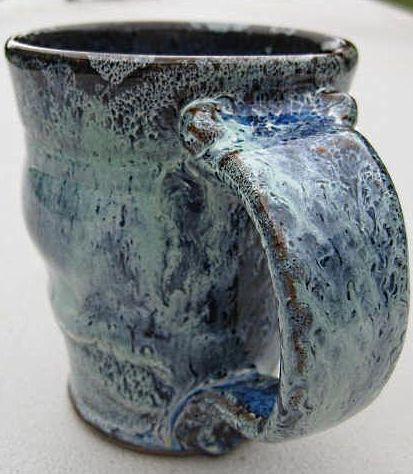
Favorite Cone 6 Glazes
by Randy McCall
The following compilation of Cone 6 glazes is the results of 5 years of testing glazes. These glazes come from potters throughout the ceramic world. All these glazes were collected from public files and on the internet. ClayArt is the main source of these glazes. However some of the glazes have been adjusted to suit my needs and the needs of other potters. Some of these glazes are very useful by themselves, but in working at the Cone 6 level I have discovered that in order to get the effects that are most suitable you have to layer glazes on on top of the other and visa versa. Great beauty and visual depth can be achieved by layering different and multiple glazes. The following pages of recipes and pictures have been tested and have been proven over time. They are reliable and repeatable for most potters. I do not use a complicated firing schedule. The main process I use in firing is to make sure you hold your kiln at 1650 deg F for at least one hour on the cooling cycle for a glaze firing. I also make sure I get a hard Cone 6 in temperature. I have also found that you need to hold your bisque and glaze firing at medium temperature for at least 5 hours to reduce pinholing to make sure organics in clay is completely burnt out. You should have no trouble in repeating these glazes as long as the materials have not changed as of 2010. There are also some commercial glazes that are mentioned in layering for those potters that make be interested in purchasing glazes rather than making there own. The main objective of this work is to aid new potters or folks getting into ceramics that need tried and true glazes to get them started in their work. A real thanks to all the potters on ClayArt as this is an invaluable tool of thousands of potters throughout the world that have a love of pottery and desire to share their knowledge and wisdom. In closing one more note should be mentioned that for each glaze the originator of the glaze if known will be mentioned if available. Some glazes may only be referred to by a book and author.
Part I
Single Glazes
Part II
Layered Glazes
Part I
Single Glazes
Nutmeg Variation
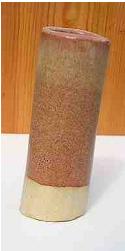
Recipe Name: Nutmeg Variation
Cone: 6 Color: red
Firing: Oxidation Surface: Glossy
Amount Ingredient
23.3 Dolomite
23.3 Spodumene--Gwalia
6.8 Frit--Ferro 3134
23.3 Red Art
23.3 Silica
100 Total
Additives
3.2 Yellow Ochre
4.9 Tin Oxide
Comments: This is glaze was originally developed by Richard Burush but was changed by removing the kaolin and subing with redart clay and reducing the red iron oxide. It changes color from red where thin to cream where thicker. Pouring or dipping a thin coat gives a shiny reddish brown color similar to shino. A lot of color variation based on thickness. One of the best glazes in layering.
C Harris Tenmoko
Recipe Name: C HARRIS TENMOKU
Cone: 6 Color: TEMMOKU
Firing: Oxidation Surface: Glossy
Amount Ingredient
18.6 Nepheline Syenite
8.5 Gerstley Borate--1999
9.3 Dolomite
9.3 Talc
18.6 Ball Clay Number 1
28.2 Silica
7.5 Bone Ash
100 Total
Additives
11 Iron Oxide--Red
Great iron red glaze. The best I have ever used. Layers great. Best red with three thick coats and a hold at 1650 deg F.
Orange Matt
Recipe Name: Orange Matt
Cone: 6 Color: blue
Firing: Oxidation Surface: Matte
Amount Ingredient
7.2 Dolomite
11.3 Gerstley Borate--1999
13.9 Talc
39.1 Nepheline Syenite
9.5 Kaolin--EPK
19 Silica
100 Total
Additives
10 Rutile
Comments: Variation of Jayne Shatz's Blue Matt
MCCALL'S GREAT GRAY
Recipe Name: MCCALLS GREAT GRAY
Cone: 6 Color: GREY/BROWN
Firing: Oxidation Surface: Matte
Amount Ingredient
5 Gerstley Borate--1999
2 Whiting
41 Feldspar--Custer
12 Ball Clay Number 1
10 Red Art
4 Spodumene--Gwalia
9 Dolomite
7 Bone Ash
3 Talc
2 Lithium Carbonate
5 Silica
100 Total
Additives
2 Crocus Martis
1 Manganese Dioxide
1.3 Rutile
4 Iron Oxide--Red
Comments: Semi Matt green gray glaze. Somewhat complicated in amount of materials. Nice smooth glaze with some specs and variation. Try thin or two coats. Antique type glaze. Can go green if thicker.
Warm Jade
Recipe Name: Warm Jade
Cone: 6 Color: GREEN
Firing: Oxidation Surface: Glossy
Amount Ingredient
44.2 Nepheline Syenite
25.2 Gerstley Borate--1999
18.9 Silica
11.7 Ball Clay Number 1
100 Total
Additives
3 Copper Carbonate
4 Rutile
5 Tin Oxide
Comments: Adjusted from Chappell's Floating Blue. Gives a nice warm jade green glaze. Three thick coats brushed.
Great green glaze. 4% copper carbonate will give an iridescent green. 2% copper carbonate will give a celedon light green. This glaze is not stable in a dish washer.
Noxema Blue
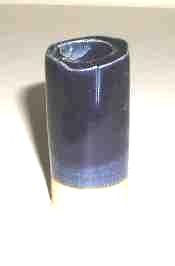
Recipe Name: Noxema Blue
Cone: 6 Color: Noxema Blue
Firing: Oxidation Surface: Glossy
Amount Ingredient
48.3 Feldspar--Custer
23.2 Wollastonite
10.3 Kaolin--EPK
10.1 Gerstley Borate--1999
4.5 Silica
96.4 Total
Additives
2.8 Cobalt Carbonate
Comments: This glaze is usually used as a compliment or accent to other glazes. Layers well over iron glazes.
Leach's Clear Satin
Recipe Name: Leach Clear Satin
Cone: 6 Color: Clear
Firing: Oxidation Surface: Satin
Amount Ingredient
21.7 Feldspar--Custer
21.7 Whiting
21.7 Silica
21.7 Kaolin--EPK
13.2 Frit--Ferro 3124
100 Total
Comments: This is the very best semi satin glaze I have been able to find. No crazing. Most other clears will craze that I have found, not this one. I got the glaze from Roxanne Hunnecut on Clayart. Not sure where it originated. Takes cobalt stains very well no running. A real keeper. Make sure you just put on two thin coats anything over that will creat bubbles. Nice and smooth when you get the coats on right. I usually brush one coat and sponge the second coat.
Leach's Blue
Recipe Name: Leach Blue
Cone: 6 Color: Blue Jean Blue
Firing: Oxidation Surface: Satin
Amount Ingredient
21.7 Feldspar--Custer
21.7 Whiting
21.7 Silica
21.7 Kaolin--EPK
13.2 Frit--Ferro 3124
100 Total
Additives
1.5 Cobalt Carbonate
4 Rutile
1.5 Iron Oxide--Red
Comments: Great Blue jean blue glaze tested. Apply two thin coats. Will break green if thin. If you get it to thick it will turn a transparent blue. Looks just like faded blue jeans. Created from Leach's clear satin.
June Perry's Chrome Red
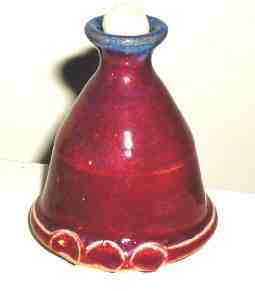
Cone: 6 Color: Candy Apple Red
Firing: Oxidation Surface: Glossy
Amount Ingredient
21 Gerstley Borate--1999
16 Nepheline Syenite
11 Kaolin--EPK
32 Silica
20 Whiting
100 Total
Additives
.2 Chromium Oxide (that is point 2)
5 Tin Oxide
Comments: This glaze needs three thick coats, thick. It will break white if thin and on edges. When it is applied right it will produce a very nice candy apple red that has a very waxy feel.
Green Matt
Recipe Name: GREEN MATT
Cone: 6 Color: blue
Firing: Oxidation Surface: Matte
Amount Ingredient
7.2 Dolomite
11.3 Gerstley Borate--1999
13.9 Talc
39.1 Nepheline Syenite
9.5 Kaolin--EPK
19 Silica
100 Total
Additives
4 Copper Carbonate
6 Rutile
Comments: This is a variation of Jane Shatz’s Blue Matt using Copper Carbonate. Other variations in color are excellent using also.
White Matt
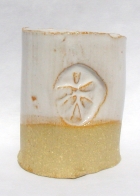
Recipe Name: White Matt
Cone: 6 Color: blue
Firing: Oxidation Surface: Matte
Amount Ingredient
7.2 Dolomite
11.3 Gerstley Borate--1999
13.9 Talc
39.1 Nepheline Syenite
9.5 Kaolin--EPK
19 Silica
100 Total
Additives
8 Tin Oxide
Comments: Variation of Jayne Shatz's Blue Matt
Rowe's Brown
Recipe Name: Brown Semi Glossy
Cone: 6 Color: Brown
Firing: Oxidation Surface: Glossy
Amount Ingredient
50 Gerstley Borate--1999
20 Kaolin--EPK
30 Silica
100 Total
Additives
5 Manganese Dioxide
10 Iron Oxide--Red
Comments: This glaze is nice and smooth no pinholes. Some olive green splotches.
Part II
Layered Glazes